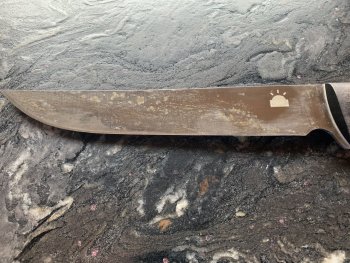tkroenlein
Well-Known Member
So...ugliness warning.
I gave verbal instructions. These are owned by a lifelong acquaintance who I am sure understood. However, the SO has been using the knives and I get this pic after one use. I'm kind of miffed...I really don't understand how this much staining happens after one "hand washing." I'm kind of thinking that SO got the blade hot and soapy and then rubbed veg oil on it making an ugly mix of knife corrosion sauce. I need some wisdom.

I gave verbal instructions. These are owned by a lifelong acquaintance who I am sure understood. However, the SO has been using the knives and I get this pic after one use. I'm kind of miffed...I really don't understand how this much staining happens after one "hand washing." I'm kind of thinking that SO got the blade hot and soapy and then rubbed veg oil on it making an ugly mix of knife corrosion sauce. I need some wisdom.

